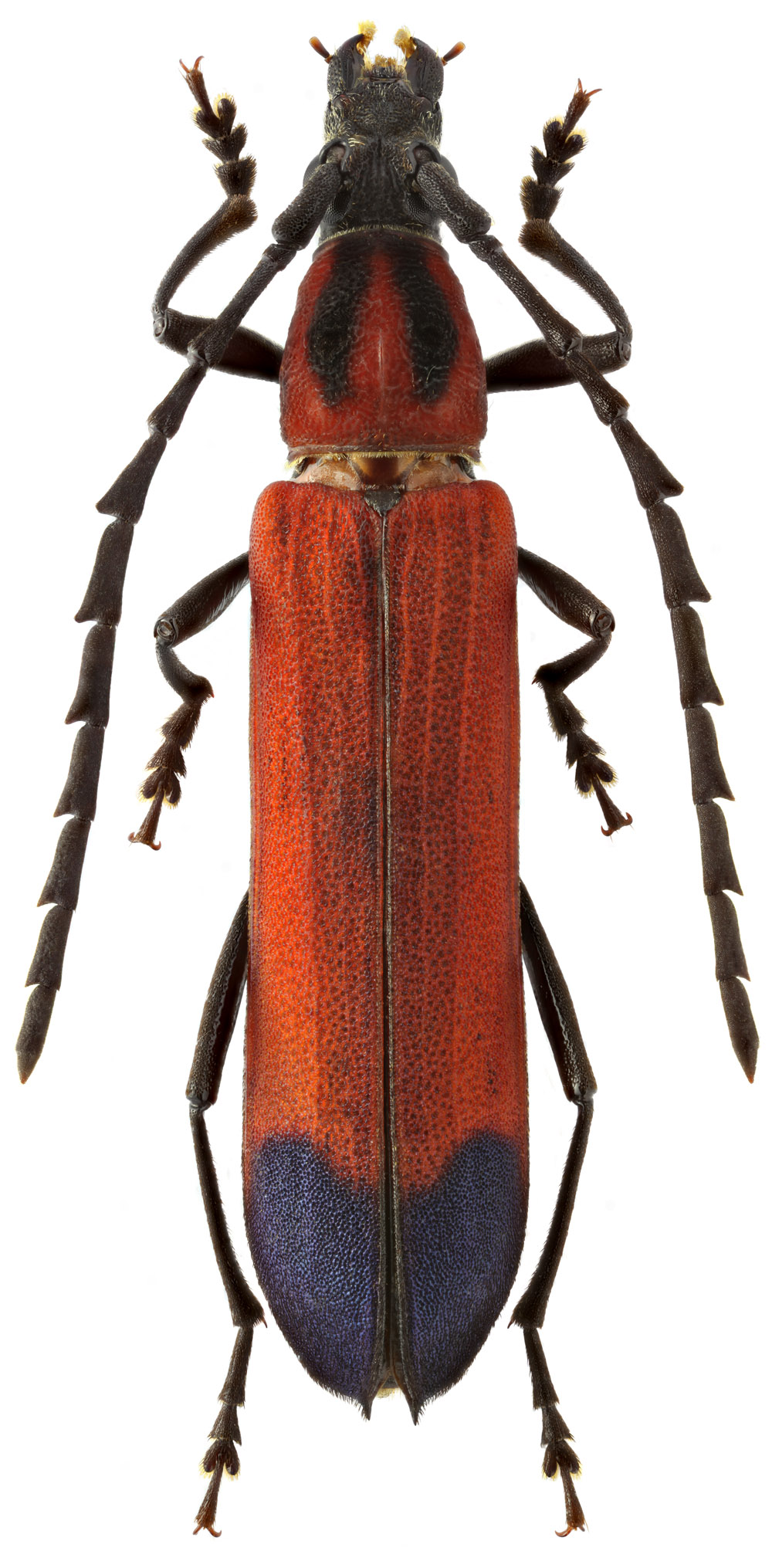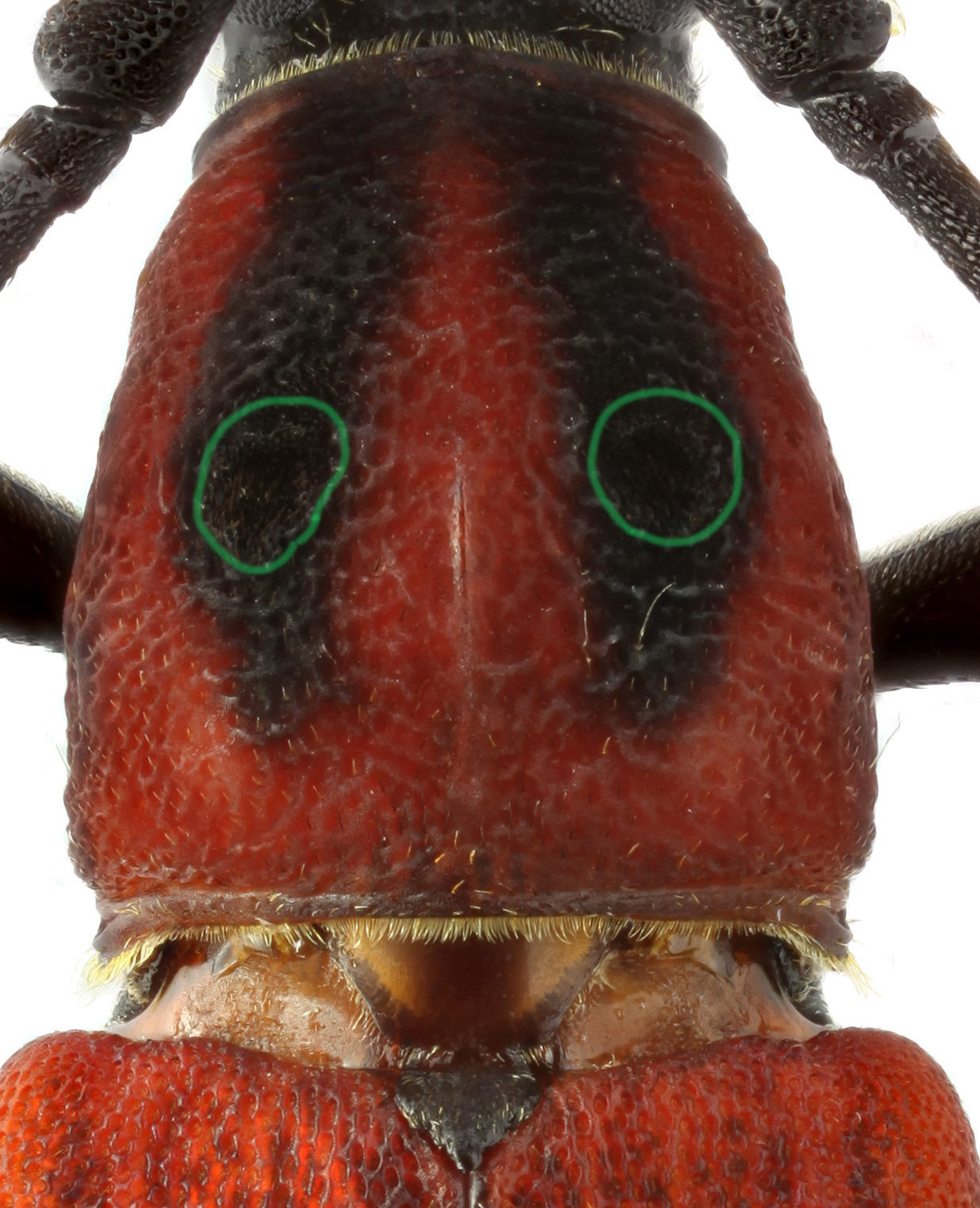| Author |
 Topic Topic  |
|
|
Max
Member Rosalia
  
Russia
713 Posts |
 Posted - 28/10/2020 : 18:47:21 Posted - 28/10/2020 : 18:47:21



|
Very nice species from Kalimantan, Bawang Mt., X.2017
Probably one of old Aurivillius` taxa. Male, 18 mm, apical part of elytra is dark blue.

377.71 KB |
|
|
dryobius
Member Rosenbergia
   
USA
1885 Posts |
 Posted - 29/10/2020 : 03:23:14 Posted - 29/10/2020 : 03:23:14



|
For me, the closest two species that I have are E. magnus and E. assimilis. But I don't have all the species from Borneo!! Who does? But I still have some that might be undescribed and some that are close to other species.
Erthrus spp. are diurnal and probably mimetic. Thus, some appear to have variations in the markings on the pronotum and elytra. Obviously, it would be nice to have a series in order to see if any characters are variable, particularly the marks on the pronotum.
I think this is a very interesting genus, but difficult to study because it is large. Unfortunately, most specimens from Borneo are only from Mt. Bawang or the Crocker Range (and nearby) area. |
 |
|
|
Max
Member Rosalia
  
Russia
713 Posts |
 Posted - 29/10/2020 : 13:24:40 Posted - 29/10/2020 : 13:24:40



|
Thanks Dan, I agree to all. But I'd rather have an idea about E. bimaculatus preliminarily. The beetle have two rounded tomented maculae into elongated dark elements of the pronotal pattern. And the degree of variability of this dark drawing is not known to anyone, certainly. And structure of antenna E. assimilis is quite different.
Yes there are few beetles and bad labels data..

353.82 KB |
 |
|
|
dryobius
Member Rosenbergia
   
USA
1885 Posts |
 Posted - 29/10/2020 : 20:20:00 Posted - 29/10/2020 : 20:20:00



|
I have a photo of the holotype of E. bimaculatus. The pronotum of bimaculatus is wider and more rounded. Your specimen is more narrow in regards to the elytra and the pronotum.
For me, the black marks on the pronotum are an unstable characteristic in some species but the marks are sometimes important. The apices of the elytra are very important (dentate, bidentate, slightly acuminate, rounded, etc) and of course the shapes and lengths of the antennomeres.
Holzschuh described E. nayani decipiens which has only two black spots on the pronotum. Your specimen could be a new species, or subspecies. |
 |
|
|
Max
Member Rosalia
  
Russia
713 Posts |
 Posted - 30/10/2020 : 18:32:36 Posted - 30/10/2020 : 18:32:36



|
Yes it could be a new. I like more old taxa than new ones.
The holotype of E. bimaculatus - it`s male or female?
Thanks! |
 |
|
|
dryobius
Member Rosenbergia
   
USA
1885 Posts |
 Posted - 01/11/2020 : 12:41:38 Posted - 01/11/2020 : 12:41:38



|
| I posted a photo of the holotype in the "type" section of the Forum. It is a rather ordinary species, considering the genus as a while. |
 |
|
|
Max
Member Rosalia
  
Russia
713 Posts |
 Posted - 01/11/2020 : 18:36:52 Posted - 01/11/2020 : 18:36:52



|
Thank You Dan! It is believed to be a female for me. In this case the wider pronotum is easy to explain as is the shortened 3 antenna segment.
Nevertheless, the structure of the antennae is similar in general. The apices of the elytra - the same. As well as the type of elytra pattern (forward curved). And.. After careful color correction of your photo, I made sure that blue is there. So I didn't stop liking my idea.
Of course, we need more beetles. |
 |
|
| |
 Topic Topic  |
|


